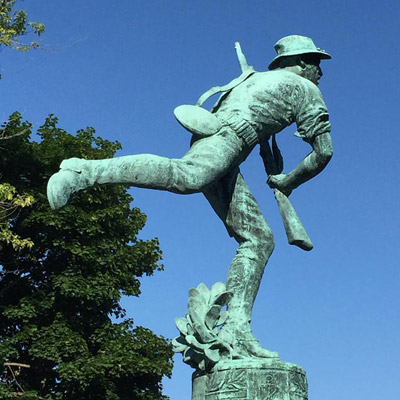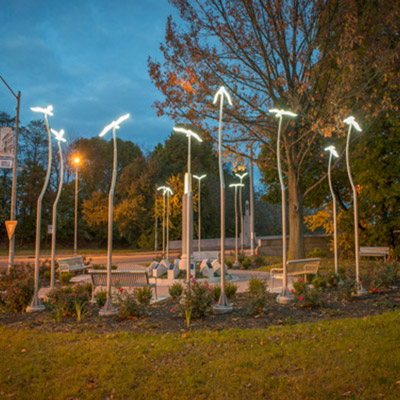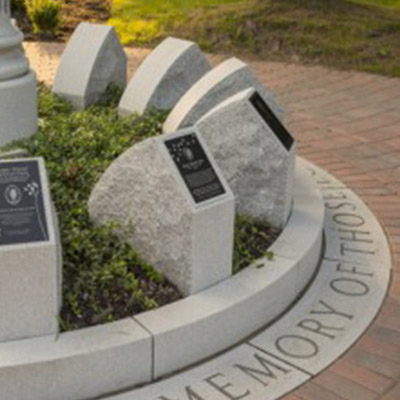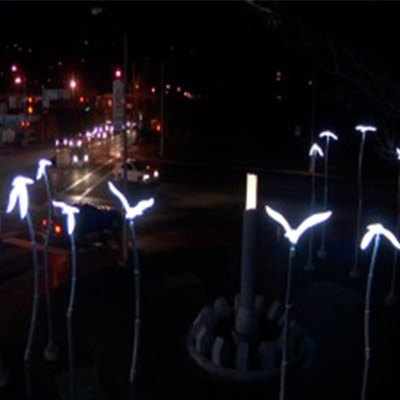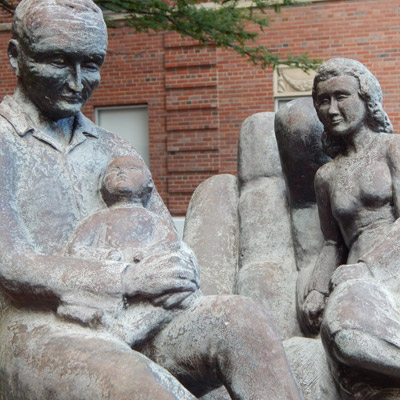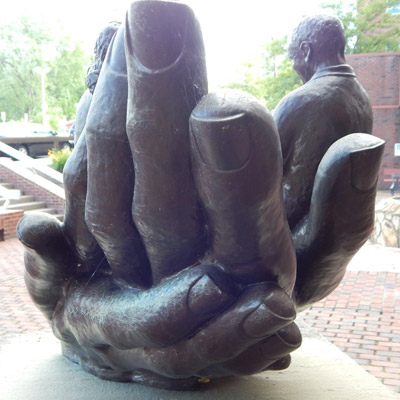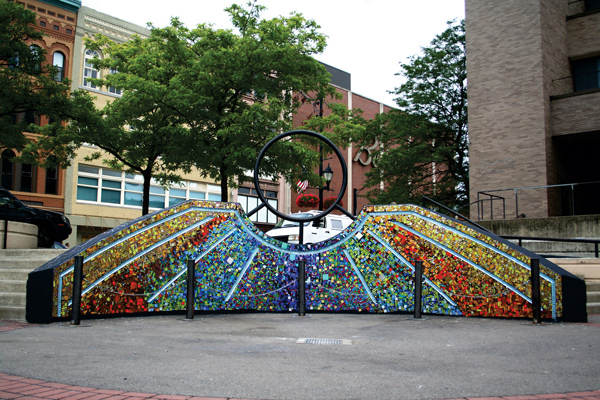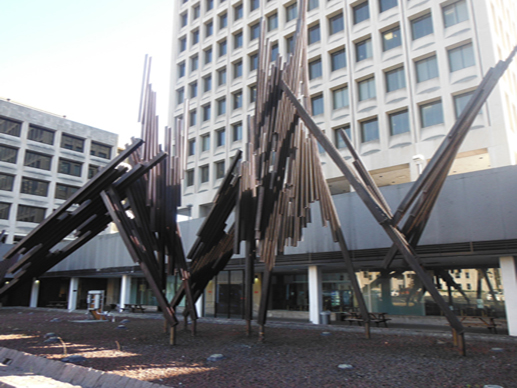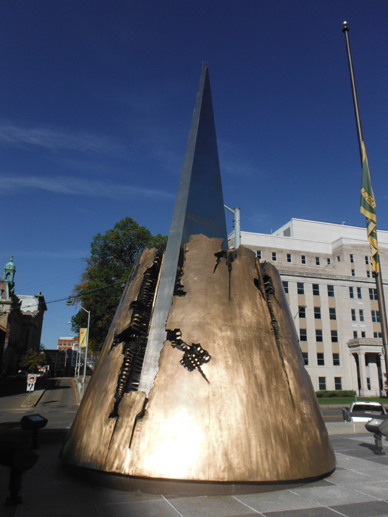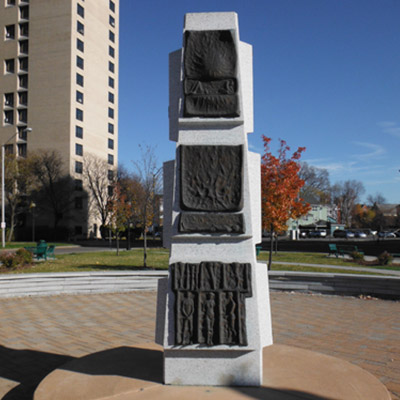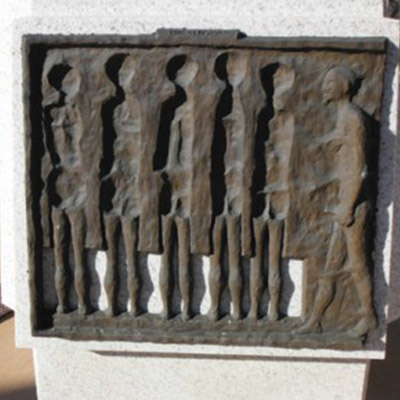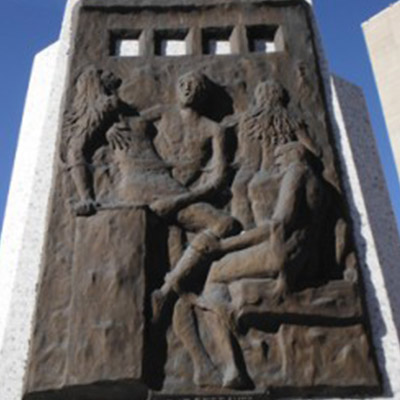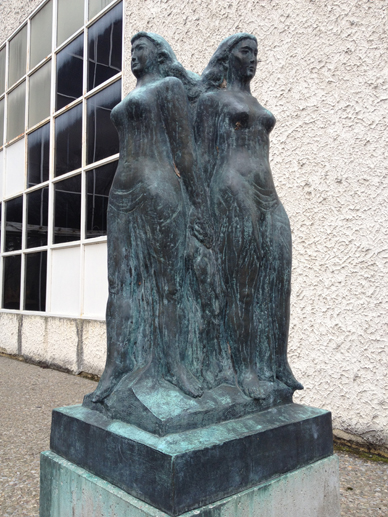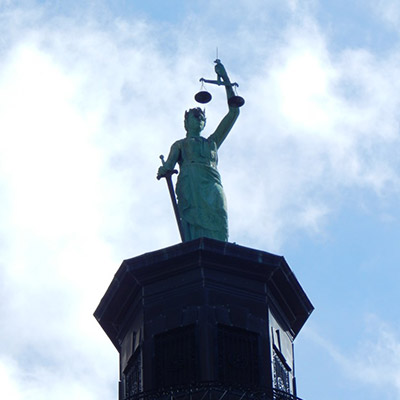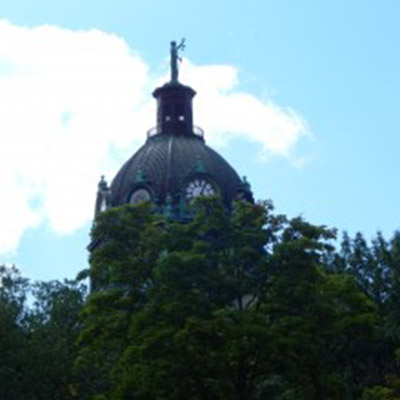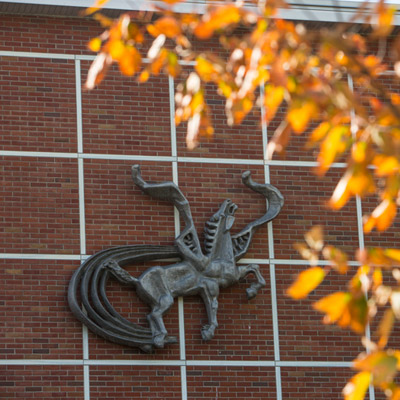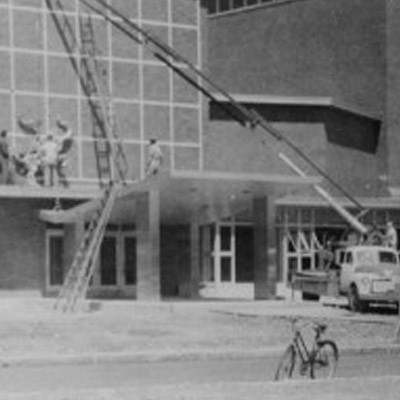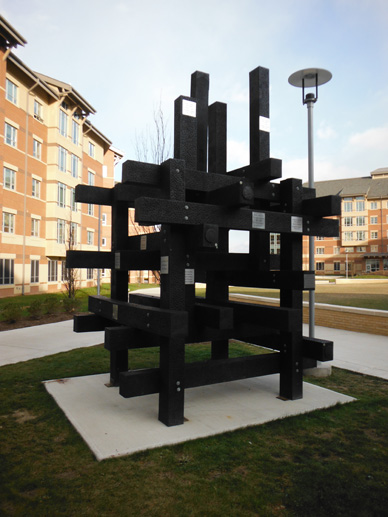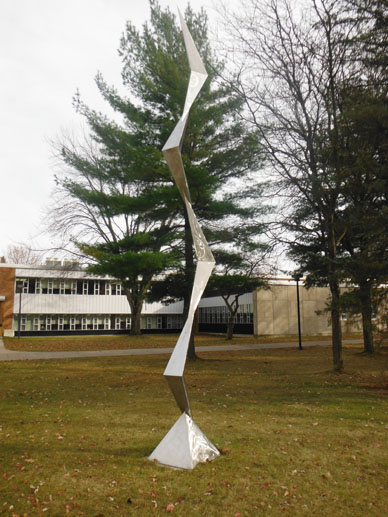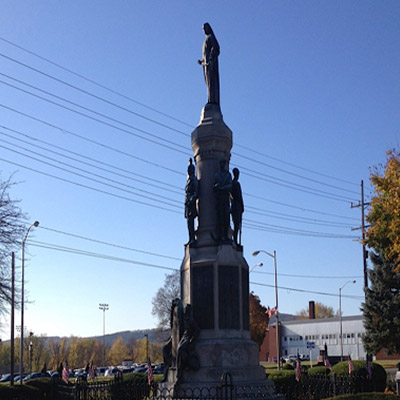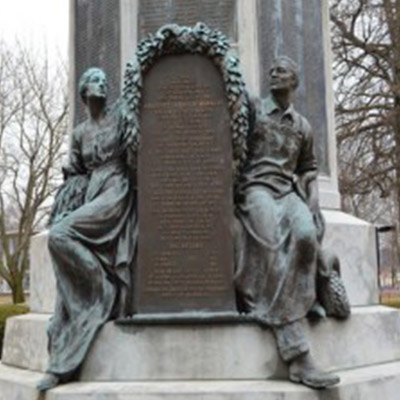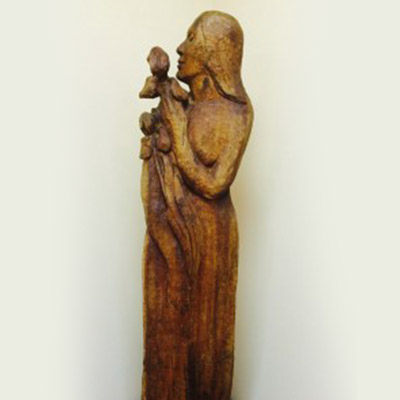EDITOR’S NOTE: Dave Schriber, a member of the The Madrigal Choir of Binghamton, wrote a participant’s perspective of the Choir’s upcoming concert with the Binghamton Community Orchestra. BAMirror also features an interview with the two organizations’ musical directors.
The Madrigal Choir of Binghamton and the Binghamton Community Orchestra will join forces Sunday (April 25) to perform contemporary Welsh composer Karl Jenkins’ “The Armed Man: A Mass for Peace.” It is a powerful and poignant piece in the tradition of other United Kingdom works such as Benjamin Britten’s “War Requiem” and Ralph Vaughn Williams’ “Dona Nobis Pacem” (the latter to be performed June 5 by the Downtown Singers).
Rarely in my 20 years as a classical choral singer have I felt truly caught up emotionally in a piece. Until now, the most memorable was Aaron Copland’s “The Promise of Living” during the 9/11 Remembrance Concert at Binghamton University in September 2002. The first time I heard a recording of “The Armed Man,” I knew it would send shivers up and down my spine just to rehearse it.
This will be an emotionally exhausting piece to perform, as there are deep tonal contrasts between the harsh and disturbing war images and the hauntingly mournful and beautiful Mass elements. The piece has become all the more meaningful to me as I’ve researched its parts, and I hope what I’ve learned will encourage you to attend this concert and will help you better appreciate the work in its context.
Jenkins subtitled the work “A Mass for Peace,” but only four of its 13 movements are traditional Mass elements. This piece is not uniquely Catholic or even Christian. It recognizes what the preamble to the United Nations Charter calls “the scourge of war” as a universal human tragedy.
This work was commissioned for the millennium celebration by the Royal Amouries in Leeds, Britain’s oldest national museum. The museum’s master, Guy Wilson, selected the texts, which include Hebrew and Christian scriptures, an intoned Islamic call to prayer, observations of a Japanese eyewitness to Hiroshima and portions of an ancient Hindu/Indian epic. As Jenkins began composing, “ethnic cleansing” began in Kosovo, and Jenkins dedicated his completed work to its victims.
The title “The Armed Man” is the translation of a 15th century French song which found its way into many Masses of the Renaissance period. Its text translates as “The armed man should be distrusted; it has been decreed everywhere that each man shall arm himself with a coat of iron mail.”
The opening movement’s minor key is underlined by a military march percussion rhythm as bugles, fifes and drums build to the initial choral statement of the Armed Man theme, in French. The second movement is an Islamic call to prayer. Since in Islam there is no musical notation for this call, the interpretation is left to the cantor. A soprano solo opens a plaintive and penitent choral Kyrie. The men then intone Psalm 56:1-2 and 59:1 in a Gregorian style. The Sanctus is not the usual expansive praise of God but is mysterious and foreboding, sung to a march-step rhythm. Its glorias are like sun rays obscured by ominous gathering storm clouds; its hosanna with blaring trumpets reflecting the meaning of that Hebrew word is a plea meaning: “save us now.”
The next four movements describe war and its aftermath. In a Hollywood movie-style accompaniment, the chorus builds in heroic intensity through the first two stanzas of “Hymn Before Action” (1898) by Rudyard Kipling, the British poet of colonial empire. The text paints a picture of earth and sea poised to witness an epic battle, in expectation of glory and honor to be bestowed in life or death, and crescendos as troops invoke the aid of heaven: “Lord, grant us strength to die.” Another lengthy martial introduction, with faster tempo, precedes lyrics from John Dryden’s “A Song for St. Cecelia’s Day” (1687); distinctive are the trumpet call to arms and the “double double beat of the thundering drum.” Soon-to-be widowed women try to console themselves with “How blest is he who for his country dies,” words of the Roman poet Horace (23 BCE) translated by Irishman Jonathan Swift (Dryden’s second cousin) in a letter to the Earl of Oxford urging peaceable action in the face of hostilities.
Realizing too late that they are doomed, all the soldiers can do is desperately charge. The slaughter plays out in a glissando cacophony of random cries and moans by the chorus, instructed by the composer’s notation to “convey horror.” Following a long, eerie silence, a lone trumpet plays “Last Post,” the British equivalent of “Taps,” against the sound of rain. A bell tolls mournfully. The bleak text of the next movement is haunting enough by itself without knowing it is the memoir of Toge Sankichi, a 24-year old eyewitness to the Hiroshima atomic bombing who became a passionate peace activist before he died in 1953 of radiation-induced leukemia. Describing the mushroom cloud towering above and looking at the desolation and death all around, four solo voices over sinister, sustained strings finally observe, in macabre unison, “there smoulders a curse.”
The text that immediately follows would appear to be a seamless continuation of the last scene but actually comes from the Sixth Century BCE sacred Hindu/Indian epic “The Mahàbhàrata.” It describes an even older war of mythic proportions which, despite “civilized rules” attempting to limit the barbarity of war (much like the 1949 Geneva Conventions), ended in horrific atrocities and carnage. These two movements — “Angry Flames” and “Torches” — paint as ghoulish and ghastly a picture of torment and suffering as any flammis acribus of a Latin Mass’s Dies Irae Dies Illa — and without the images blunted by unfamiliarity with Latin. These are emotionally difficult passages to sing as well as to hear.
A lamentful Agnus Dei in larghetto tempo brings cathartic relief to singer and audience. The slow, reflective soprano solo that follows, its text by Guy Wilson, confesses grief and survivors’ guilt “now the guns have stopped.” A long, accompanied string solo introduces the molto largo theme of the lovely Benedictus, the last of the traditional Mass elements, its hosanna soaring fortissimo to high A in the soprano voice. This for me is the moment perhaps of greatest pathos in the entire piece.
The Armed Man melody is reprised in the last movement, but now in a major key, with a Renaissance dance rhythm, sung merrily, as words from 15th century Thomas Morley’s “La Mort d’Arthur” declare “better is peace than always war.” The chorus becomes human chimes as words from Alfred Lord Tennyson’s “In Memoriam A.H.H.” envision a more hopeful age ringing out “the thousand wars of old” and ringing in “the thousand years of peace.” Jenkins ends his work with a sumptuous largo, a cappella chorale based on the vision of Revelation 21:4 that, in the end, God will wipe away all tears, and there shall be no more death, neither sorrow nor crying or pain.
ABOUT THE CONCERT
WHEN: 3 p.m. Sunday, April 25; pre-concert lecture on the work at 2 p.m. by Dr. Gary Boerckel, Chairman of the Music Department at Lycoming (Pa.) College
WHERE: Vestal Middle School (note new location), 600 S. Benita Blvd., Vestal.
TICKETS: $15 ($10 for seniors, $5 for students with valid ID); available at the door
DETAILS: www.madrigalchoir.com; www.bcorchestra.com

